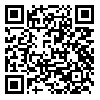BibTeX | RIS | EndNote | Medlars | ProCite | Reference Manager | RefWorks
Send citation to:
URL: http://jdm.tums.ac.ir/article-1-241-en.html

 , Y. Soleymani Shayesteh
, Y. Soleymani Shayesteh 
 , H. Mehrizi
, H. Mehrizi 
 , Sh. Rezayi
, Sh. Rezayi 
 , M. Mohammadi
, M. Mohammadi 
 , K. Bamdad Mehrabani
, K. Bamdad Mehrabani 
 , M. Koohkan
, M. Koohkan 
 , B. Golestan
, B. Golestan 

Background and Aim: Qigong is a type of Chinese psychosomatic exercise that integrates meditation, slow physical movements, and breathing. Numerous physical and mental benefits have been classically ascribed to qigong. On the other hand, unstimulated saliva is thought to play an important role in oral immunity, enamel stability and moisturizing the oral mucous membrane. Impaired salivary secretion leads to dental caries, mucosal deterioration and mouth dryness. The aim of the present study was to analyze the effect of a qigong program on various parameters of saliva such as quantity of unstimulated saliva, pH and SIgA.
Materials and Methods: Twenty three subjects participated in this clinical trial study. The experimental subjects underwent a qigong training program, conducted by a qualified instructor. The program consisted of half an hour daily practice for 6 months (spring and winter). Saliva was collected in two periods: once during the spring before the experiment commencement and the second, in the following spring. During each period saliva collection was done on tuesday of each week. pH and quantity of salvia measurements were taken simultaneously. SIgA measurements were also taken based on the values obtained in the last phase of the experiment at the end of each spring. The results were analyzed using paired sample T test, one way repeated measure and Bon Ferroni multiple comparison. P<0.05 was the level of significance. Results: Based on our findings, the change in the amount of unstimulated salvia as well as SIgA was statistically significant (P<0.001) however, there was no significant difference in pH values before and after experiment.
Conclusion: These findings demonstrate that after 6 months of practicing qigong, significant changes in amount of unstimulated saliva and SIgA occurred in participants. The authors suggest that qigong may be a beneficial adjunctive treatment that enhances amount of unstimulated saliva and SIgA.
Received: 2005/11/13 | Accepted: 2007/03/7 | Published: 2013/08/19
| Rights and Permissions | |
 |
This work is licensed under a Creative Commons Attribution-NonCommercial 4.0 International License. |


